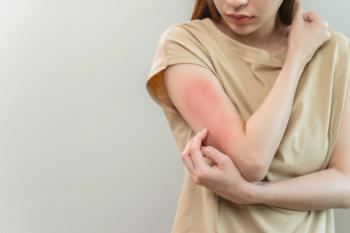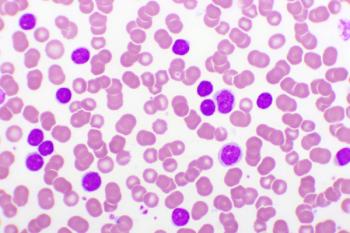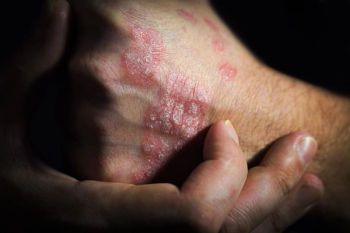
Classifying Skin Disorders in Parkinson Disease
Skin disorders in Parkinson disease can be classified into 2 major groups: noniatrogenic, which are more prevalent in people with PD and not related to therapy, and iatrogenic, which are caused directly by antiparkinsonian therapies.
Skin disorders in Parkinson disease (PD) can be classified into 2 major groups: noniatrogenic skin disorders, such as melanoma, that are more prevalent in people with PD and not related to therapy, and iatrogenic skin disorders, which are caused directly by antiparkinsonian therapies, said Nicki Niemann, MD, neurologist at the Muhammad Ali Parkinson Center and an assistant professor of neurology at Barrow Neurological Institute.
Transcript
AJMC®: Hello, I'm Matthew Gavidia. Today on the MJH Life Sciences’ Medical World News, The American Journal of Managed Care® is pleased to welcome Dr Nicki Niemann, neurologist at the Muhammad Ali Parkinson Center and an assistant professor of neurology at Barrow Neurological Institute. Dr Niemann additionally served as a co-author of a review article titled “
There are 2 major groups of dermatologic disorders in PD. How do these 2 groups compare, particularly when it comes to the role of antiparkinsonian therapy, as you just addressed with
Dr Niemann: A helpful high level division is that you could divide skin disorders into those that are not related to therapy or that are seen in Parkinson disease. So, those would be noniatrogenic disorders, and then into another group, the iatrogenic disorders.
In terms of how antiparkinsonian therapy impacts the noniatrogenic disorders, I would say there's very limited impact. The main one that comes to mind is when someone has excess sweating as an
On the flip side of that, patients who have
In terms of those that are caused directly by treatment, in some cases, it's relatively obvious that treatment is causing a problem with respect to skin. So, if you think of someone, let's say who has
There are other times when the connection may seem obvious, but the link is not always made between medication or antiparkinsonian therapy on one hand and then the skin disorder on the other hand. A good example that comes to mind is the presence of
Sometimes patients tend to get worked up for cardiological reasons, pulmonary disorders, kidney disorders, to try and see if there's anything that is causing this leg swelling. And sometimes people are put on diuretics, when in fact most patients will be able to tell you that they started their medication, they had no edema, and a few months later, they started noticing swelling of their ankles. And so oftentimes that connection is not made if there's a couple of months between first exposure and then development of the problem. But in fact, if you stop the medication, which probably is the best test for the side effect, typically the swelling will go down in a matter of weeks or months.
AJMC®: Is there progress being made in addressing the skin related impact of antiparkinsonian therapies? How can this be better addressed?
Dr Niemann: I think as it relates to just the skin disorders that occur as a side effect, essentially, I think progress is made, and I think progress is mainly being made in the sense that there are more publications, such as our article. There are talks at conferences that help educate neurologists and other doctors about skin disorders and other nonmotor features of Parkinson disease. And also in the past decade or so, there's been increased attention to skin in Parkinson disease because of its possible use as a
Newsletter
Stay ahead of policy, cost, and value—subscribe to AJMC for expert insights at the intersection of clinical care and health economics.












































